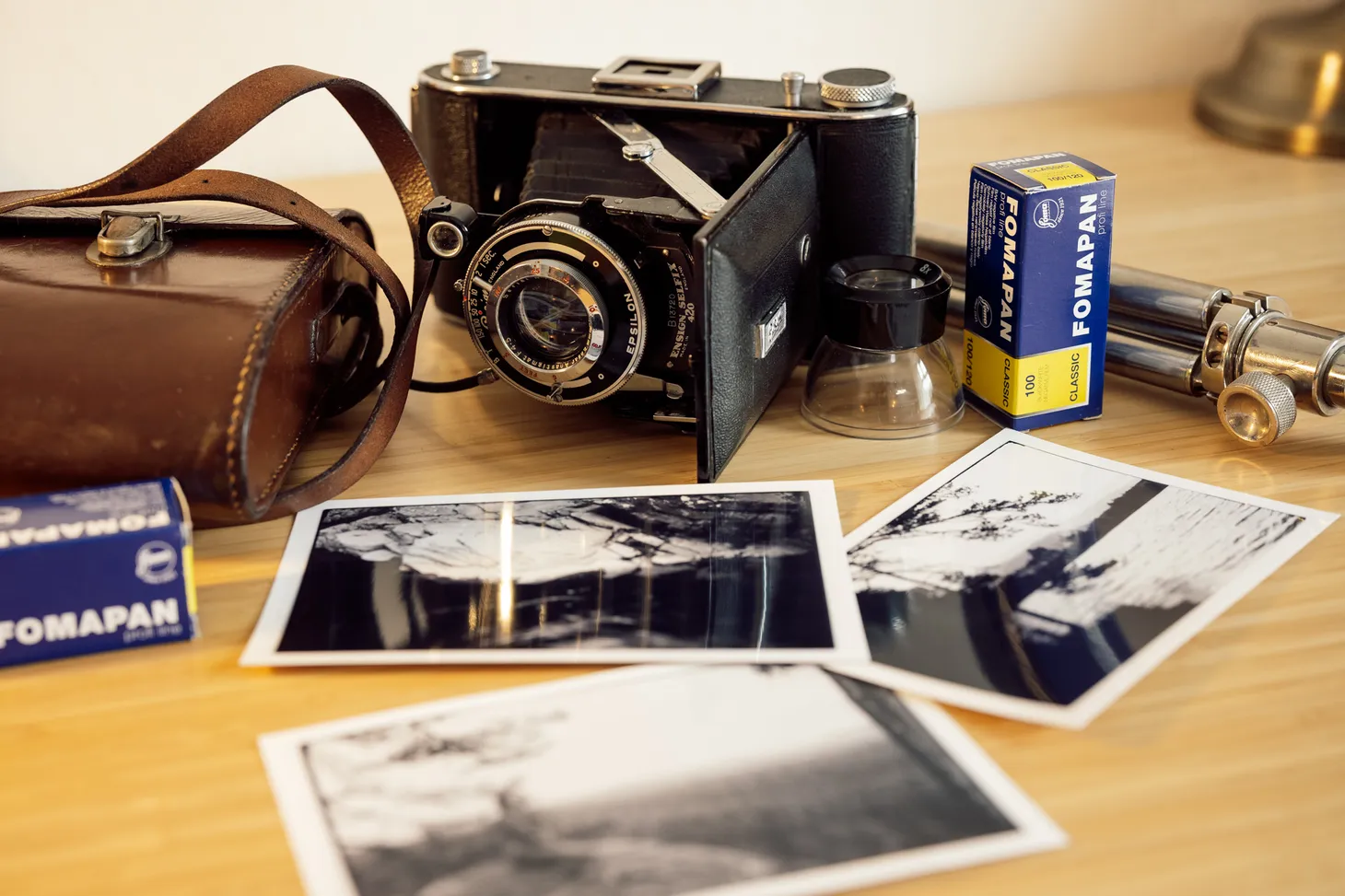Nature notes: this week’s nature and wildlife photography, 4 July 2020

A bewitching encounter with a roe deer, meadow brown butterflies galore, and – finally – a whitethroat fledgling.
The weather hasn’t been great this week again. It’s been cold for the time of year, with plenty of rain and wind. Wildlife has mostly been hunkered down and hidden. I’ve had several mornings with very few sightings of any kind, beyond the usual pigeons and corvids. There have, however, been several very precious encounters.
A morning of mammals
One thing I’ve learned about the nature of Warblerland is that it never fails to surprise. On Tuesday morning I had a succession of encounters that enthralled me. As I passed over the invisible threshold that marks the boundary of this landscape zone in my mind, I stepped left as usual, creeping on tiptoe to the gate overlooking the first meadow. There’s always a frisson of excitement here – what will I see? Will the barn owl be hunting?
No barn owl this week, but lying right there in front of me, less than five metres away, was the most beautiful roe doe. The meadow cradled her, cushioned her, as she washed herself and nibbled at the grass. She was fully aware of me, and when our eyes met I knew that she did not see me as a threat, only a curiosity. Looking into her eyes from such close quarters was electrifying. I have never felt anything quite like that moment, never been so moved by the close presence of a wild creature.
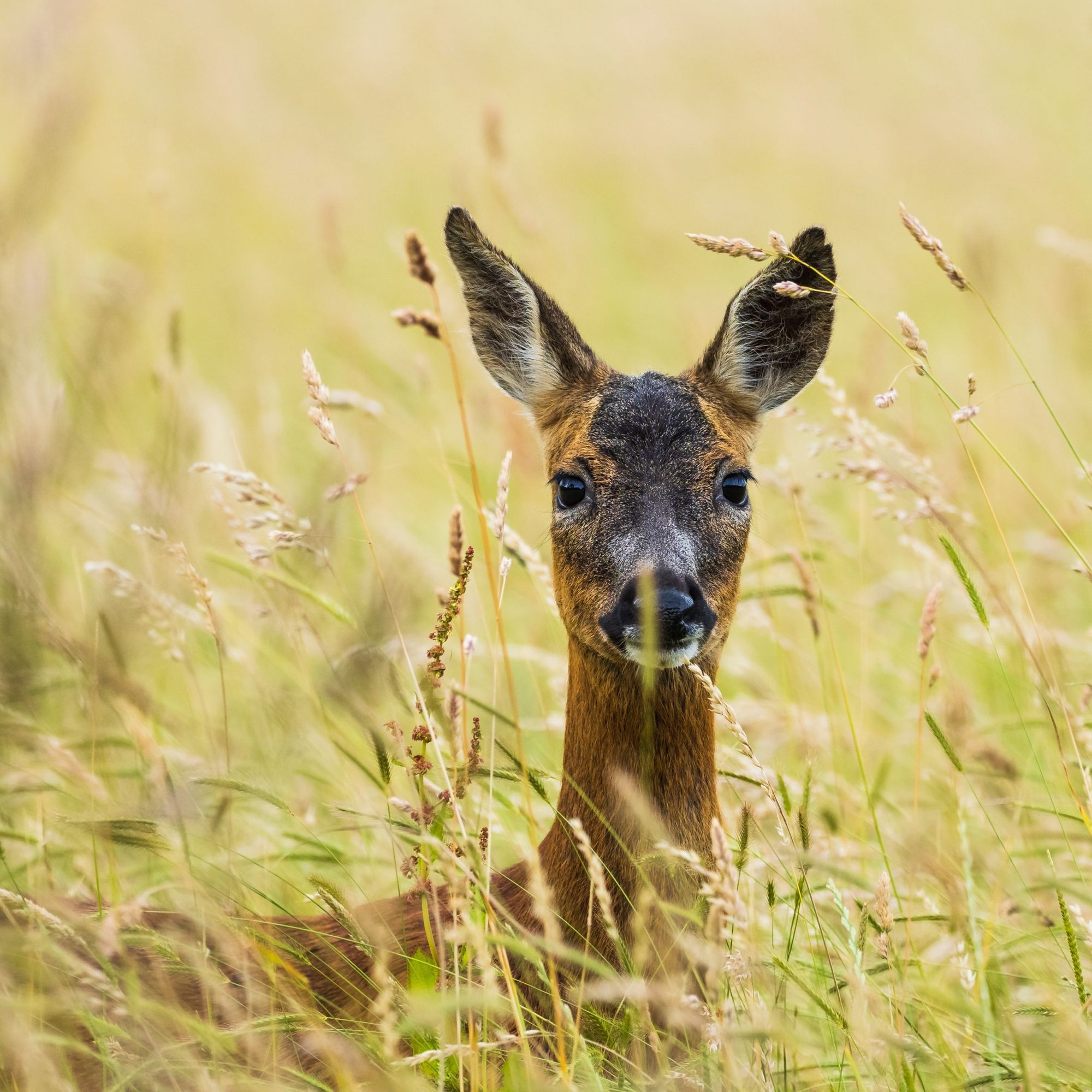
I snapped a few images and recorded several video clips (see a short video here on YouTube). After a few minutes, she got up and ambled almost directly towards me as I was recording before she disappeared into the hedgerow about two metres to my right.
To say I am pleased with the image I managed to capture is an understatement. I think it communicates the sense of calm curiosity I detected from the doe.
A few minutes after walking back out onto the road, I saw a brown hare hop out of the grass and sit right there beside the verge. I still had my camera in hand. The local brown hares can look almost goofy – this is anthropomorphising, perhaps, but something about the look in their eyes makes me smile. Less than two minutes after the hare had continued on its way, a muntjac stepped onto the same patch of road and stood there poised, watching me. Some of the local muntjacs are graceful, elfin; this one looked solid and chunky for such a small being, its growing antlers bulbous and incongruous.
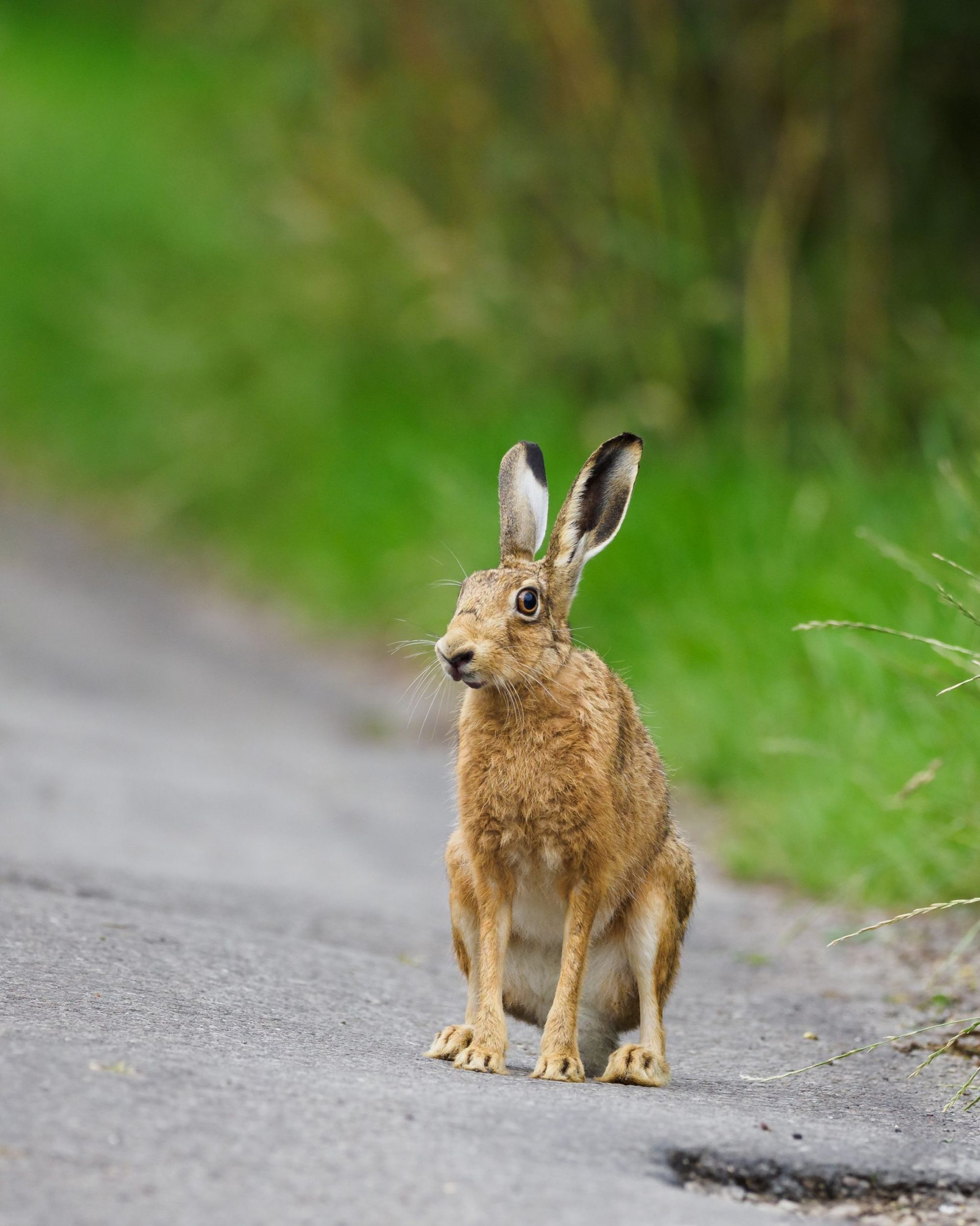
Somehow, as I continued on my daily quest through Warblerland, I knew that I would see the fox, and I knew which field I would see him in. Sure enough, as I crept through the open gate, I saw his bushy tale whisking away as he dived into the hedge. I can’t explain how I knew that I would see the fox – I see him rarely enough for a sighting to be notable, but there he was, exactly where I knew he would be.
The whitethroats, and assorted invertebrates
The common whitethroat has become my favourite subject in recent weeks, certainly the most obliging. There are a few places where I can reliably observe them at very close range if I’m patient and quiet, but until this week I hadn’t seen any fledglings. I guessed that the young birds were very shy, and probably staying hidden in the deep sedge along with the female adult birds (which I also almost never see). It’s my theory that one reason this area is so good for warblers is that the hedges are unusually dense and thick – up to five or six metres thick in many places.
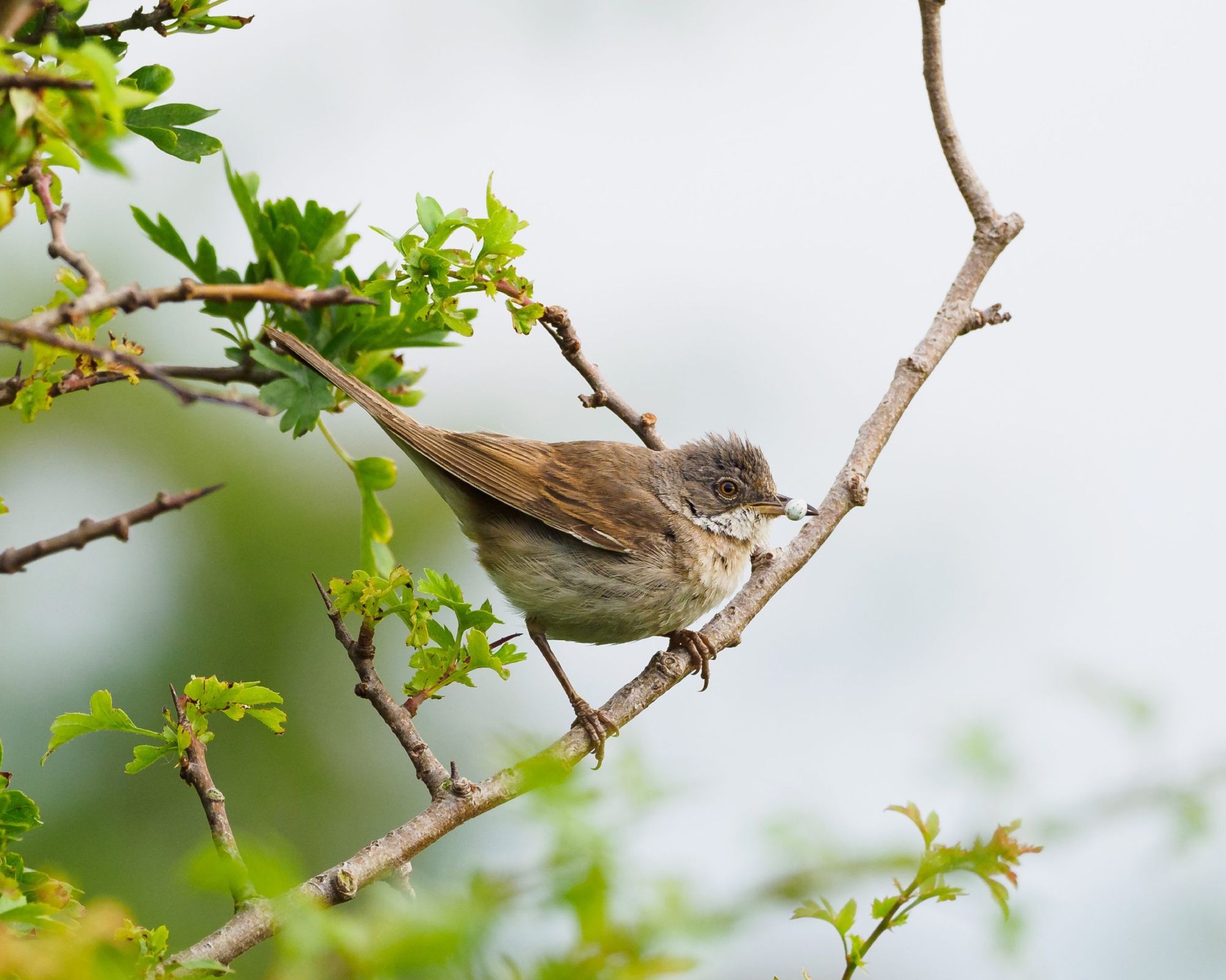
On Friday, after a few minutes of observation at a particular blackthorn bush I’ve come to know as ‘Bunting Towers’ (there are reed bunting and yellowhammer nests there), I spotted a young common whitethroat at last. It was much smaller than the adult male who was still bringing it food. Watching it was very special.
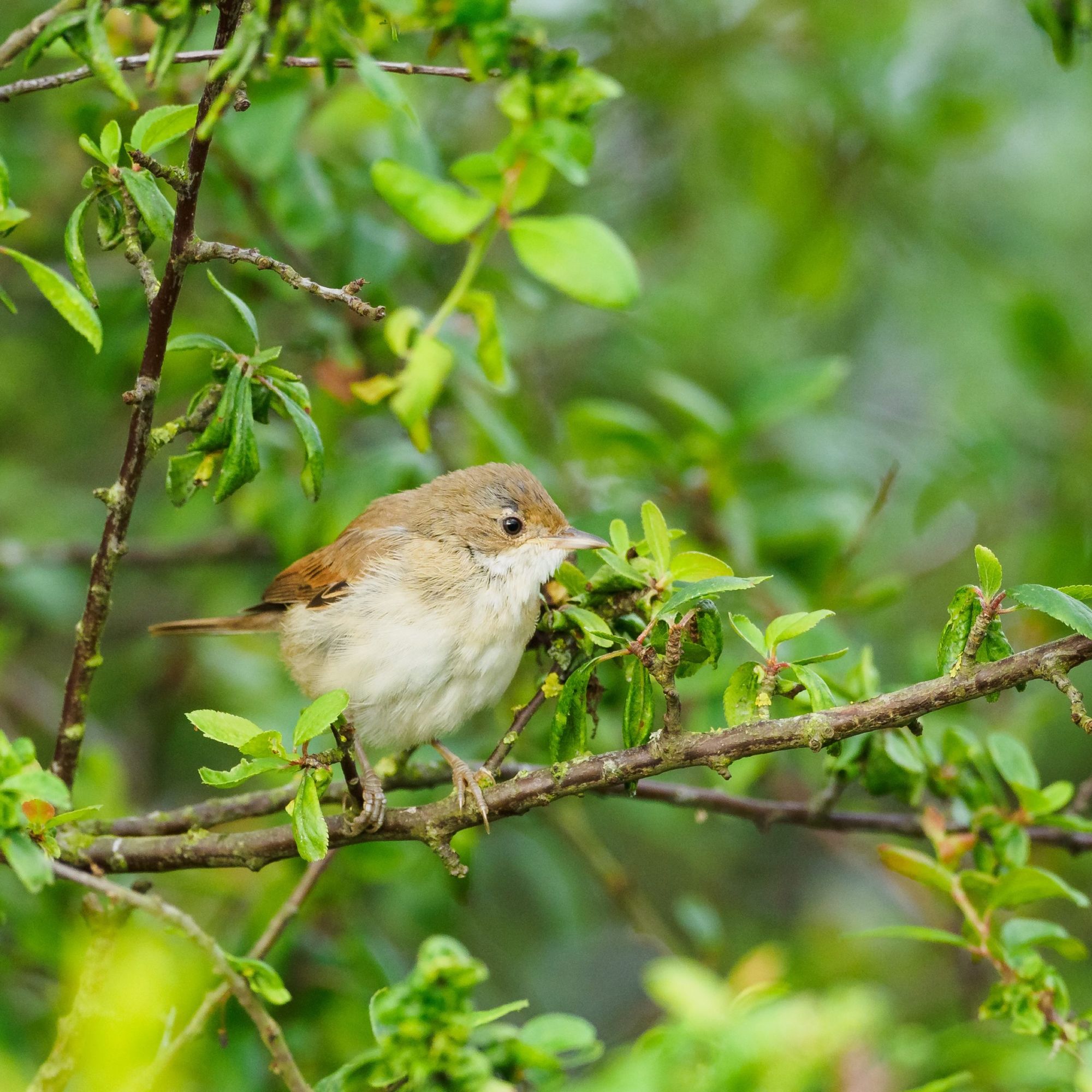
Less tangible magic this week has included an explosion of meadow brown butterflies. They are everywhere – I’ve seen several hundred. Today Hannah and I spotted a yellow shell moth, perfect as a jewel.
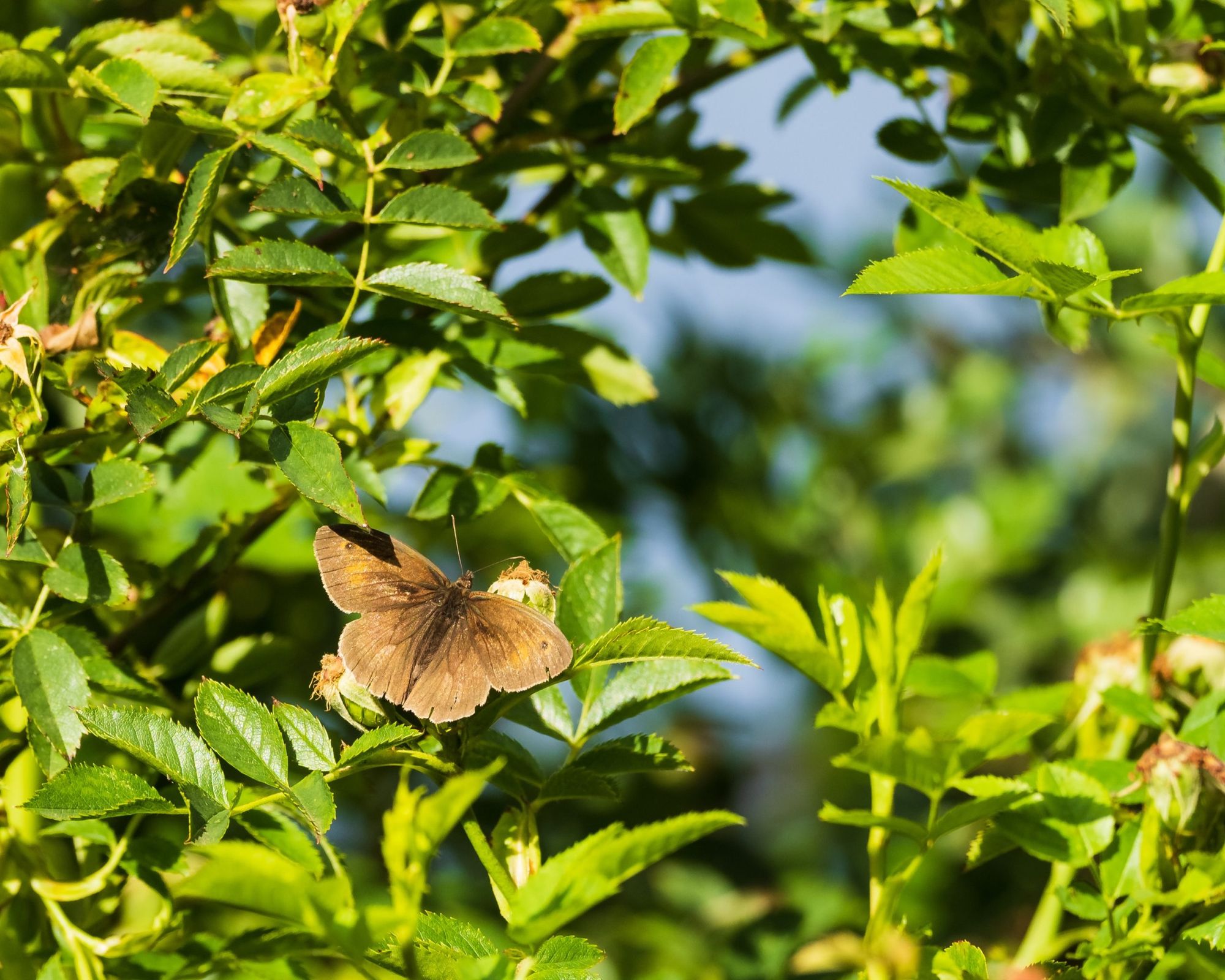
Even a quiet week in Warblerland has much to teach.
If you’d like to support my writing and photography, you can buy me a coffee. Thank you!
All images © Alex Roddie. All Rights Reserved. Please don’t reproduce these images without permission.
Alex Roddie Newsletter
Subscribe here to receive my occasional personal newsletter in your inbox. (For the fun stuff, please consider subscribing to Alpenglow Journal instead!)




